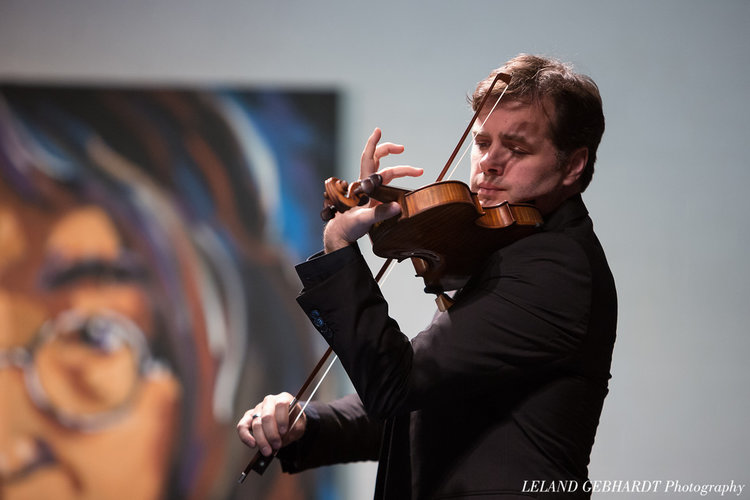
THE UNLIKELIEST STAR RECITAL’S MUSICAL FIREWORKS
In the evening you poke through the Tenderloin, S.F.’s counterpart to NYC’s Bowery, past the homeless, jobless, hustlers, panhandlers and addicts. And encroaching couples clutch arms uncertainly, side-stepping litter on darkening sidewalks. Paying at the door, you get no ticket, nor printed program, and you enter the 30-seat hall. A flyer lists several composers (all female) and the night’s violinist (male). Wearing blue jeans, he walks in bearing his instrument, with no accompanist anywhere on the horizon; he might as well be naked. He has just 17 listeners for his efforts. But on this night of pyrotechnic violin solos, no one dozes off.
Robert Simonds is a brave virtuoso. To match his music-in-the-raw repertory, I’d have to go back half a century to an indefatigable Ruggiero Ricci in Berkeley doing a back-breaking solo night of “Chaconne”/“Tzigane”/Kodaly sonata. Or maybe to San Jose solo harpsichordist Fernando Valenti in the ’80s playing Scarlatti sonatas without a printed program after explaining tersely, “I’ll play Scarlatti sonatas till I’m ready to drop, then take a break, and return for the second half for more Scarlatti.” Period.
With his challenging program of musical “firecrackers”—short high-energy pieces, flaming out after just three minutes—Simonds was in his element. He’s a confident and amazingly gifted performer biting off works of immense complexity with assured pitches, bringing to bear his rapier-like bow. Typically, these solo works strove for an ensemble effect, with Simonds constantly bouncing back and forth between lower strings, dictating harmony, and high strings providing thematic material. Some had a forest of double stops (hitting two adjacent strings at once), others down-bow tremolos, yet others left-hand pizzicato (plucked, unbowed strings, in a one-hand feat). Missy Mazzoli’s opus even called for melismas (wavering, sliding pitches).
Alexis Bacon was inspired by Norwegian country fiddlers, while Patricia Van Ness called for broad leaps up and down the scale and some renaissance effects like the breathlessly paced estampie dance. “Elegy” by Cindy Cox of the Cal faculty gave us some barely audible pianissimos among her bifurcated sonic outpourings. Molly Joyce’s whimsical music with melodies of yearning had the feel of improvisation. Elizabeth K. Bayer’s tongue-in-cheek contribution alluding to “big losses in the Bitcoin bust” was described as if some Philip Glass music were inserted into a microwave.
In sharp contrast, Lera Auerbach, 44—an early Soviet émigré, and arguably the best-known instrumental composer of the group—waxed nostalgic, with lyrical melodies in a doleful minor mode.
In such a tightly focused, fiery recital, I could not tell how these women composers would compare with the big (male) name composers in symphonies and concertos. But within this specific context, they could figuratively call on a super player to be playing rapid chess while walking a tightrope and inventing rhymed hexameter poetry, all at once.
It was such a bracing experience that some listeners I’m sure found themselves reaching for nonexistent seat belts.
Clearly the thirtyish Simonds (pronounced “Simmons”) poured heart and soul into this short but sweat-dab recital, showing the virtuosity that has him playing as principal second violin in the Louisville Orchestra. This as technically as difficult a program as any one could bite off, yet Simonds had a sense of humor. When told afterward that he had evidently picked all the easy pieces, he laughed and countered, “Yes, I know.”
After this July 27 recital at the Center for New Music, Simonds was off for his annual summer stint in the Cabrillo Music Festival orchestra.
Center for New Music, 55 Taylor St., San Francisco. July 27, Robert Simonds in unaccompanied violin. For info on future concerts: go online.